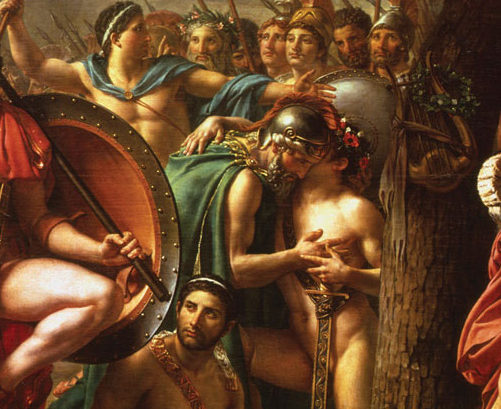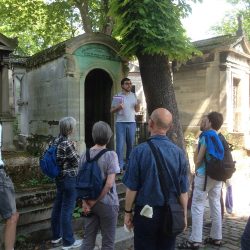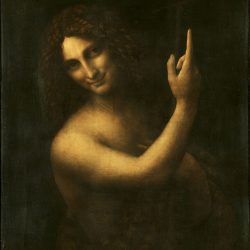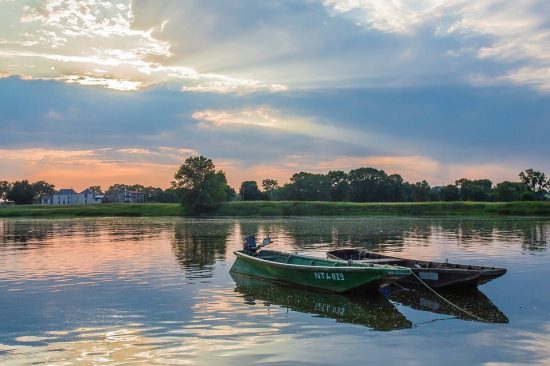 Gay Paris is of course one of the world’s greatest cities–above all, one of its great cultural cities, with literature and art and architecture and fashion and cuisine and so on and so forth. But I think that Americans easily forget how great a gay city it is as well. They don’t call it “Gay Paris” for nothing!
Among other things, I think few people know that France eliminated its laws against sodomy in 1791, 212 years before the US Supreme court decided Lawrence v. Texas. This is why (or part of why) so many American and English gay people, such as Oscar Wilde or James Baldwin, went to live in Paris in the 19th and 20th centuries.
But Paris generally has an amazing gay tradition, and the list of gay greats who have lived there is endless, including Frenchmen such as Proust, Jean Cocteau, Genet, and Yves Saint Laurent and expats from many lands, such as Diaghilev, Nijinsky, and Cole Porter. It has a particularly fascinating Lesbian history, with Lesbian greats both French, such as Colette, and American, such as Gertrude Stein and Alice Toklas.
So…just as is true with New York and London and Berlin, a gay history tour is a great way to visit gay Paris. In fact, gay history is such an important theme in Parisian history that it leads you to and through the main neighborhoods and museums, showing you a fascinating and relatable side of the city that a normal tour or guidebook would simply ignore.
Gay Paris is of course one of the world’s greatest cities–above all, one of its great cultural cities, with literature and art and architecture and fashion and cuisine and so on and so forth. But I think that Americans easily forget how great a gay city it is as well. They don’t call it “Gay Paris” for nothing!
Among other things, I think few people know that France eliminated its laws against sodomy in 1791, 212 years before the US Supreme court decided Lawrence v. Texas. This is why (or part of why) so many American and English gay people, such as Oscar Wilde or James Baldwin, went to live in Paris in the 19th and 20th centuries.
But Paris generally has an amazing gay tradition, and the list of gay greats who have lived there is endless, including Frenchmen such as Proust, Jean Cocteau, Genet, and Yves Saint Laurent and expats from many lands, such as Diaghilev, Nijinsky, and Cole Porter. It has a particularly fascinating Lesbian history, with Lesbian greats both French, such as Colette, and American, such as Gertrude Stein and Alice Toklas.
So…just as is true with New York and London and Berlin, a gay history tour is a great way to visit gay Paris. In fact, gay history is such an important theme in Parisian history that it leads you to and through the main neighborhoods and museums, showing you a fascinating and relatable side of the city that a normal tour or guidebook would simply ignore.
Great Gay Paris Tombs

Two of the best places for a gay history tour in Paris are the great monumental cemetery, Père Lachaise, and the Louvre Museum. Any guidebook will tell you that Oscar Wilde is buried in Père Lachaise, and many will also mention Gertrude Stein (along of course with many famous straight people, such as Chopin or Edith Piaf). But there are so many more tombs of famous gay and Lesbian people, including Proust and Colette.
One of the things that I find most fascinating is the long history of gay couples buried together or close to each other—starting in the Napoleonic period. The tomb in this picture is an interesting example, or possible example: it contains the remains of two Napoleonic generals, Louis Lemoine and Jean-Pierre Augereau.
Both died relatively late; neither ever married. The inscription says, “here lie two ancient warriors, two friends, death separated them, death reunites them, glory is eternal, and friendship ends.” A couple? Impossible to say, of course—but given the reticence of the past and the suppression of evidence, that is typical of gay history. An interesting mystery, in any case. In the photo, you see one of my gay history walking tours.
Great Gay Paris Art

The Louvre is also an amazing place to look for gay history. In part, this is because it has such a great Greek and Roman collection—often the gayest part of any museum’s collection. But the Louvre’s ancient collections are particularly gay, from a little bronze plaque representing an initiation ritual (like so many initiation rituals, involving male-male sex) on pre-Classical Crete to a lavish collection of male-male courtship scenes in vase-paintings, to halls full of homoerotic Greek male nudes, to not one but four statues or busts of the Emperor Hadrian’s boyfriend Antinous, whom the Emperor declared a god after his death (suicide?) at the age of 19. There are over 100 ancient representations of Antinous left in the world, and most major museums have one. But four? Only the Louvre.
The Renaissance Italian collection is also particularly homoerotic, including one major homoerotic work by each of those gay superheroes, Michelangelo and Leonardo. Leonardo’s is his surprisingly dishy St. John the Baptist, who appears more like a young pagan god than an ascetic saint and seems to have been modeled on a curly-haired young assistant with whom Leonardo was in love, Gian Giacomo Caprotti, better known by Leonardo’s nickname for him, Salaì (more or less ‘little devil’). Of course the Louvre also contains the Mona Lisa, which many art historians also believe was modeled on Salaì as well.
Michelangelo is represented by what is probably his most homoerotic work, the so-called Dying Slave: a languid and effeminate male nude who seems not to be dying but to be in ecstasy. Michelangelo has drawn here on the tradition of that most homoerotic saint, Saint Sebastian, and possibly also on his feelings about own erotic life, as he refers to himself in one of the sonnets addressed to his great love, Tommaso de’ Cavalieri, as a conquered, chained, and naked prisoner of a knight (with a pun on the name ‘Cavalieri’).
Gay Spartans
And there is much much more. Again, as at the cemetery, the Napoleonic period provides a surprising amount of gay material. For instance, in a vast canvas representing the Spartans in the pass at Thermopylae, just to the side of the naked leader Leonidas, David places a little citation of ancient Greek sexuality, a naked adolescent boy snuggling up to his bearded lover (see featured image). This is just what probably took place in the pass at Thermopylae.
Even among Greeks, the Spartans were famous for their male-male relations, and many Greek writers associated this kind of relationship with courage (on the theory, very different from a modern idea of homosexuality, that no-one would do anything cowardly in front of his male lover). But it is very rare for a modern representation of ancient Greece to represent such a scene explicitly. In fact, I have listened to what French guides say about the painting, and they always say that it is a son with his father—but *no* Greek source says anything about sons and fathers encouraging each other to be courageous in battle, so that is just a modern bowdlerization.

The Louvre, in short, is one of the greatest gay museums. And there is lots of gay stuff to see elsewhere in Paris too!
To learn more, come on one of Oscar Wilde Tours’ gay Paris tours. We are doing a combined tour of gay history and art (with of course lovely hotels, great food etc.) in Paris and London (which if anything is even gayer!) August 20-28, and we are now offering a $400 discount on remaining seats! Check it out at: http://www.oscarwildetours.com/gay-londongay-paris/ (Either half of the tour can be purchased separately, with a $200 discount)
Paris Gay Travel Resources
]]>



 Gay Paris is of course one of the world’s greatest cities–above all, one of its great cultural cities, with literature and art and architecture and fashion and cuisine and so on and so forth. But I think that Americans easily forget how great a gay city it is as well. They don’t call it “Gay Paris” for nothing!
Among other things, I think few people know that France eliminated its laws against sodomy in 1791, 212 years before the US Supreme court decided Lawrence v. Texas. This is why (or part of why) so many American and English gay people, such as Oscar Wilde or James Baldwin, went to live in Paris in the 19th and 20th centuries.
But Paris generally has an amazing gay tradition, and the list of gay greats who have lived there is endless, including Frenchmen such as Proust, Jean Cocteau, Genet, and Yves Saint Laurent and expats from many lands, such as Diaghilev, Nijinsky, and Cole Porter. It has a particularly fascinating Lesbian history, with Lesbian greats both French, such as Colette, and American, such as Gertrude Stein and Alice Toklas.
So…just as is true with New York and London and Berlin, a gay history tour is a great way to visit gay Paris. In fact, gay history is such an important theme in Parisian history that it leads you to and through the main neighborhoods and museums, showing you a fascinating and relatable side of the city that a normal tour or guidebook would simply ignore.
Gay Paris is of course one of the world’s greatest cities–above all, one of its great cultural cities, with literature and art and architecture and fashion and cuisine and so on and so forth. But I think that Americans easily forget how great a gay city it is as well. They don’t call it “Gay Paris” for nothing!
Among other things, I think few people know that France eliminated its laws against sodomy in 1791, 212 years before the US Supreme court decided Lawrence v. Texas. This is why (or part of why) so many American and English gay people, such as Oscar Wilde or James Baldwin, went to live in Paris in the 19th and 20th centuries.
But Paris generally has an amazing gay tradition, and the list of gay greats who have lived there is endless, including Frenchmen such as Proust, Jean Cocteau, Genet, and Yves Saint Laurent and expats from many lands, such as Diaghilev, Nijinsky, and Cole Porter. It has a particularly fascinating Lesbian history, with Lesbian greats both French, such as Colette, and American, such as Gertrude Stein and Alice Toklas.
So…just as is true with New York and London and Berlin, a gay history tour is a great way to visit gay Paris. In fact, gay history is such an important theme in Parisian history that it leads you to and through the main neighborhoods and museums, showing you a fascinating and relatable side of the city that a normal tour or guidebook would simply ignore.


